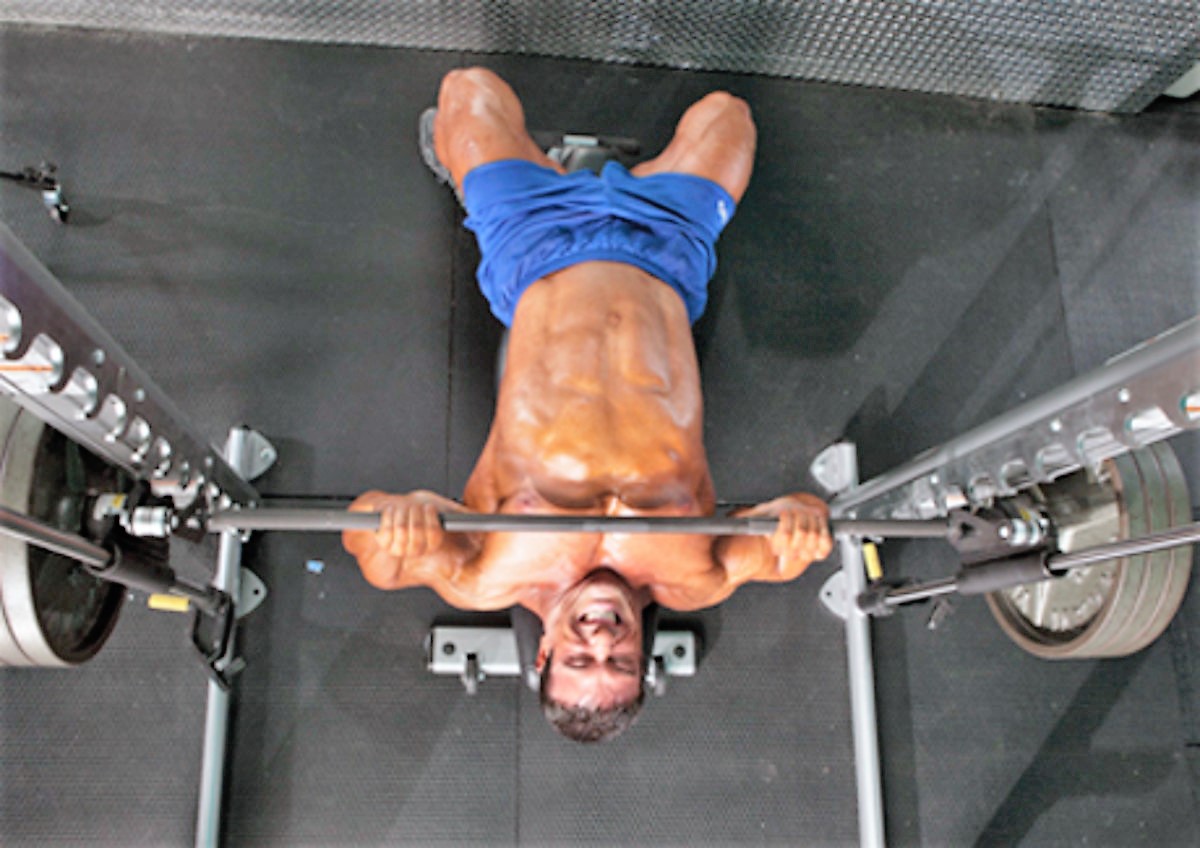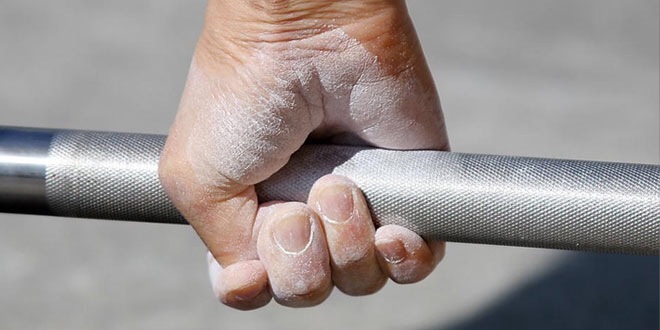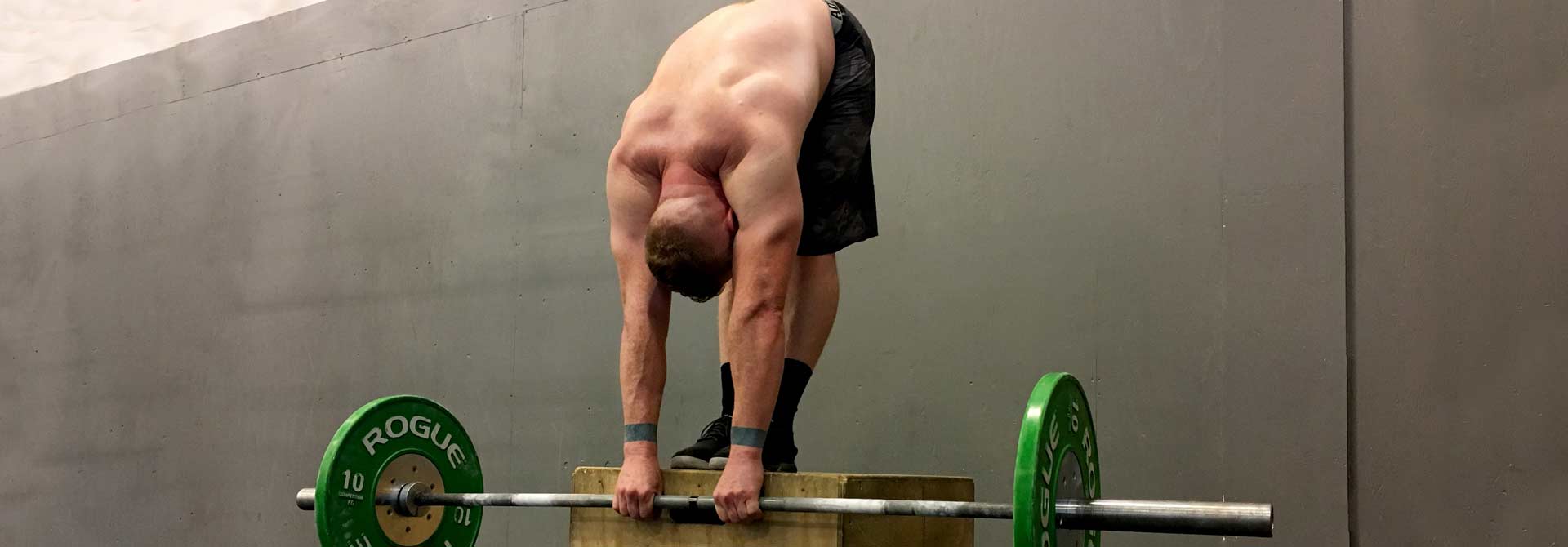For all intermediate lifters, there comes the dreaded period when your lifts begin to slow, your progress hits a halt, and your weights reach a plateau. Ostensibly, this has to do with sticking points.
You feel as though the climb is getting steeper, and you’re starting to dread your AMRAP sets and 95% training max sets. You’re probably hitting some sticking points.
Sticking points are points in a lift where some type of weakness – either strength or technique – is causing a bottleneck. Power, in powerlifting, is a matter of speed and force, so there’s two ways to push through a sticking point.
Either you speed past it, by accelerating your lift in the portion of the lift you’re stronger in, or you train a compensatory accessory lift to build your strength and thereby reduce the bottleneck.
Lifting Issues?
This is normal. We all make progress, but we can’t progress forever. The point that’s always made is that if you were to squat a 45lbs bar and add 5lbs to your lift every week, it would only take about 4 years to hit a 1000lbs squat.
Yet how many humans have ever reached that kind of poundage? You don’t just make progress forever – you stall out, slowly but surely, and most intermediate lifters start reaching this phase sometime around the one-year mark.
Does that mean you’ve reached your genetic potential? To put it in plain English, fuck no.
You’ve got a long ways to go, bucko, because chances are that you’re only squatting under or around doutble your bodyweight and there are plenty accomplished lifters squatting between 2.5 to 3 times what they weigh. But you’re going to have to train smarter and become much more intimate with technique and programming.
Because I’m an intermediate lifter and my numbers are mediocre, I’m not going to tell you exactly how to program or adapt your technique. But I am going to share what I’ve learned on Mount Gainstalling. Today’s lesson is sticking points.
Sticking Points, You Say?
To give an example, take the deadlift. I’ve been taught to think of the deadlift in three phases.
Phase one is the push. You start a deadlift by pushing off the floor with your midfoot, to break the weight off the floor.
Phase two is the pull. This is a combination of back power and hip power, and it’s the majority of the lift, from just under the knees to over your knees.
Phase three is the lockout, where you’re driving your hips into the bar to finish the lift.
Any given lifter has the potential to be weaker in any given portion of the lift. I take the deadlift as an example because it is generally the first lift people “get”.
Performing a technical bench press requires a lot more technique, and proper squat form is a beautiful rarity.
Besides, the deadlift is as simple as strength gets. See heavy weight. Grab heavy weight. Pick up heavy weight. Put down heavy weight. Celebrate as your ancestors have for thousands of years, and weep manly tears at the death of manual labor and look on in sorrow as the robots march to complete the automation revolution.
Where was I? Ah, yes. Sticking points.
The Reasons You’re Not Making Progress
If you’re an intermediate lifter and you’re starting to have trouble with your lifts, you may have noticed that there are portions of the lift that you perform better than others. Or, your lifts are just stalling in general. There are many reasons for this.
Reason #1
Continuous poor form. It’s possible that despite your best efforts – or rather, in your naivete as a new lifter and in your eagerness to push and pull heavy weight rather than perfect your form – you may have some major technique faults that are ultimately forcing your progress to lag, because you’ve been partially compensating for your weaknesses until they’ve become too apparent to ignore.
Reason #2
You’re not advantageously built for a specific lift. And it’s starting to show. You’ve been training not to mitigate the disadvantages of your build, but as any novice should – by performing the lift as anyone else would. If you have long legs and short arms, the deadlift can be a particular challenge.
Squatting with long femurs is also difficult. And benching with long arms is less than ideal. By identifying your sticking points (usually the lift off in the deadlift, the hole in the squat, and the middle phase of the bench press), you can train specifically to address your weaknesses and excel despite initial challenges.
Reason #3
Not enough time spent under the bar. It could very well be that you’re not struggling with a sticking point at all, but your problem is that you’re just not incorporating enough volume in your program to catch up with the progress you’ve made.
5×5 will only get you so far – at some point in your lifting journey, you have to start training at higher intensities (lower reps) while having days with more volume (higher reps, more sets) in order to continue to build muscle, grease the groove, and become a better lifter. This is a programming issue, and I won’t go into it very much today.
Reason #4
Your recovery sucks. Not a sticking points issue, but it needs to be said. Cut out the binge drinking, get your diet in order, rest more than 60 seconds per set, get enough sleep, stretch, and foam roll, and work on your mobility issues. You’re only really lifting for maybe a total of 5-10 hours per week, but your strength gains are made in bed, in the kitchen, and during rest periods.
Back to sticking points. If you’ve already started adapting your programming to fit your needs, have your diet in order, and have no recovery issues, then working on your technique weaknesses is priority numero uno. I’ll go over a few sticking points I personally have, and how I address them through my training.
My Sticking Points
I’ll go over some of my sticking points, so you have a good idea of what a sticking point is.
Sticking Point 1
When I bench, I have a strong push off the chest and a strong lockout, but my middle phase is slow. What do I do?
Solution 1: The Pin Press. The pin press is an accessory lift to the bench press where, instead of pushing off the chest, you’re pushing off pins. This lets you set the range of motion and set where your rep starts. By starting off your chest, you’re building more strength in the middle of the press.
Solution 2: The Floor Press. Same principle. The floor press is a bench press while on the floor, at a lower weight, usually for 6-8 repetitions. Because there is no bench, you can’t get the weight all the way to the chest. It stops just short of the chest. Rest for a second between every press, so you get the full benefit of pressing off the middle.
Solution 3: The Spoto Press. This is a paused bench press, with a pause just an inch over your chest. You can also use a block to do this, but it’s best to do it without one. The idea is simple – bench as you would but stop an inch or two short of your chest.
Sticking Point 2
When I squat, I don’t come out of the hole fast enough. I also develop anterior hip pain. What do I do?
Solution 1: Paused Squats. It’s simple – use up to about 70% of your TM (training max), squat down into the hole, and hold it. The higher the weight, the smaller the pause. Go for five reps. You can go with a lighter weight and hold it for even longer. This builds better hip and ankle flexibility, too, and gets you comfortable with the hole.
Solution 2: Faster Squats. Simple as well – do 5+ squats in a single breath, with a lighter weight, prioritizing speed. Sometimes, your inability to get out of the hole is because you’re just so damn used to being slow. Focus on going faster, and you’ll learn to produce more force from the hole.
Solution 3: Slower descent and stretch reflex. The stretch reflex is the hip’s natural inclination to extend at the bottom of a squat, letting you slowly descend into your squat, and then shoot out of the hole at a faster speed. You have to hit the hole at just the right timing to make use of the stretch. Practice with a lower weight.
Important Note: Core issues and back imbalances also cause your hips to be under more stress than they should. Suitcase deadlifts and frequent farmer walks help me work on my scoliosis, which is part of the reason why I lean to the right when I squat. This hip lean can also be solved with 90/90 breathing, and unilateral leg work. I do weighted walking lunges, coupled with leg presses.
Sticking Point 3
My conventional deadlift is hardest at the liftoff.
The Best Solution: Deficit deadlifts. These are weird, uncomfortable, and actually pretty damn awesome at helping you learn to stay tight and pull weight off the floor. I use a 20kg bumper plate, for a total of about 3.5 inches of deficit. This is enough to present a challenge and make me really use my legs to get out of the bottom.
Lift to Lift, Not to PR
There are many people in this world. We’re all pushing hard to make our lives mean something. I was asked what made this blog, in particular, special insofar that it describes “my powerlifting life”.
And the honest answer is that it’s my way of releasing the pressure built up over months of stagnation. This blog is a personal mantra, a day-to-day recollection of the basics and the tricks that helped me get to where I am and will help me push past challenges in and out of the weight room.
Sticking points are everywhere. For many lifters who escape to the weight room to make something of themselves and relish in the feeling of weekly PRs and consistent process, they can be a harsh wake-up call to a reality where progress isn’t consistent, and your ability to succeed depends squarely on your tenacity and passion.
Chances are you know why you’re not where you want to be yet. If not, then join me in finding out. But this is just one part of the journey. Knowing what to do and doing it are two entirely separate beasts, and identifying a sticking point and actually nullifying it is much more complex than point A and point B.
Keep Going
As a lifter, you have to make progress not just in the way you lift and in the weight you lift, but in your relationship with yourself. Take time to reflect on your progress and be happy with how far you’ve come. Never lose sight of your dream PRs and lifetime goals, but don’t fall into despair if you’re making progress slower than you might like.
My bench sucks. My squat is good, but I could come out of the hole faster. My sumo pull is solid, but I’m bouncing between technique details in my conventional deadlift and I’m not quite comfortable with it. These are my realities, and I know how to address them. The difference between this and despair is that I know I’ll get stronger, and the road ahead is hazy, but visible.
And I’m relishing every session. Not because it’s a good session, or because of the weight on the bar. But because I love the way it feels. I love pulling. I love pushing. I love lifting heavy weight, even when it’s 70%, 80%, 90%, or 95% of my training max. It’s bliss to me. And with my work schedule, I consider every day in the gym a luxury – one I get to indulge in frequently.
Getting strong is not a sure thing, and it’s definitely not a quick thing. And it’s not just PRs after PRs. You have setbacks, circumstances, problems. Most of us don’t lift professionally, but we all do our best. This blog is about how I’m working on my issues – and I hope, if you’re in the same boat, or a newcomer to the sport, that you’ll learn something and leave with a positive takeaway.




